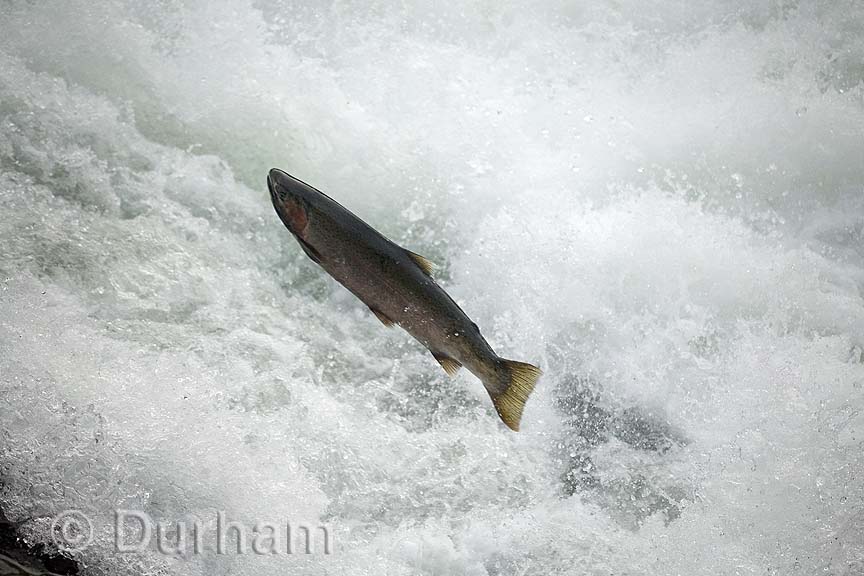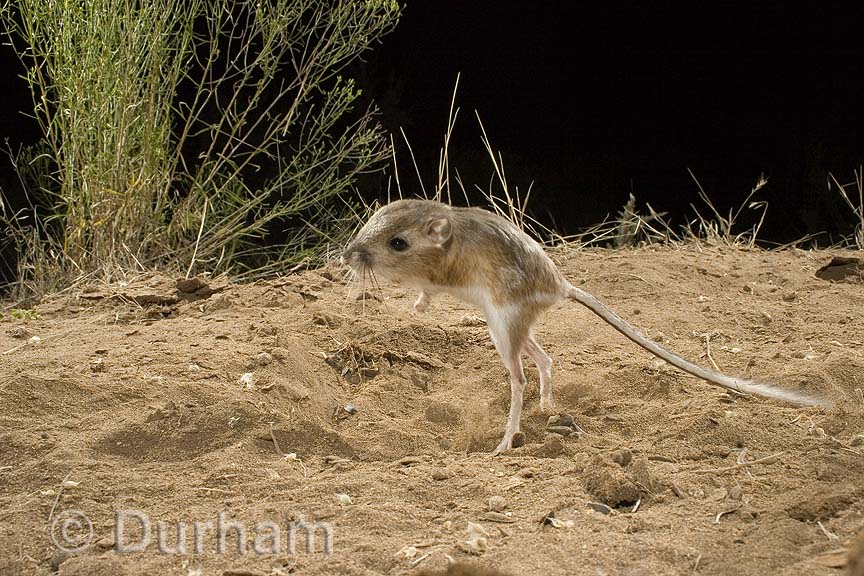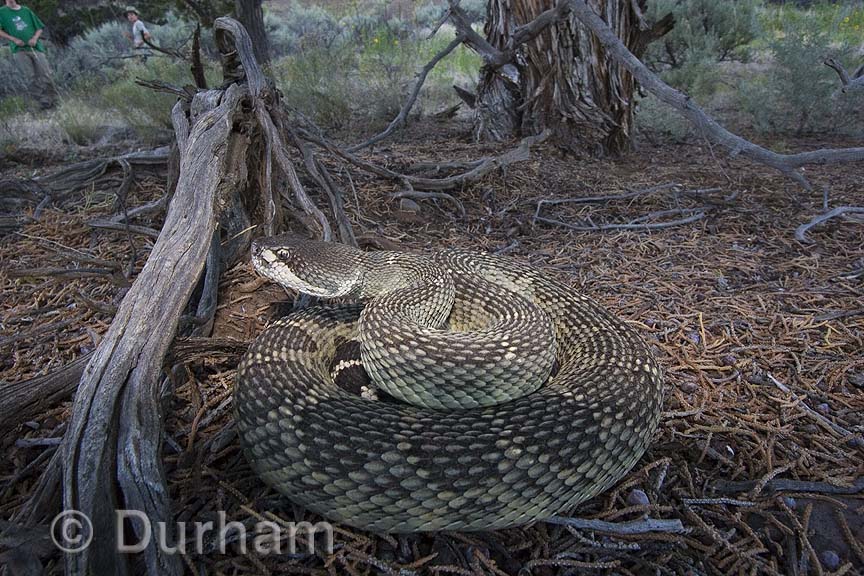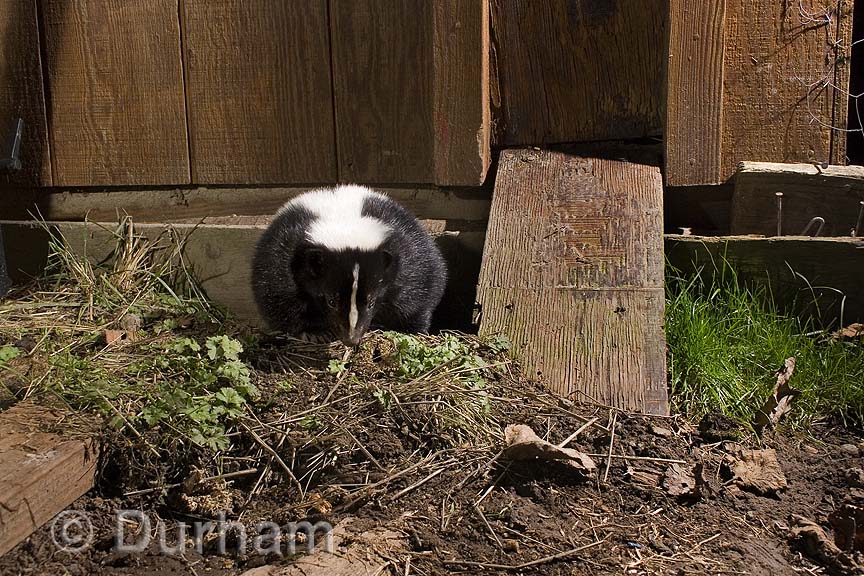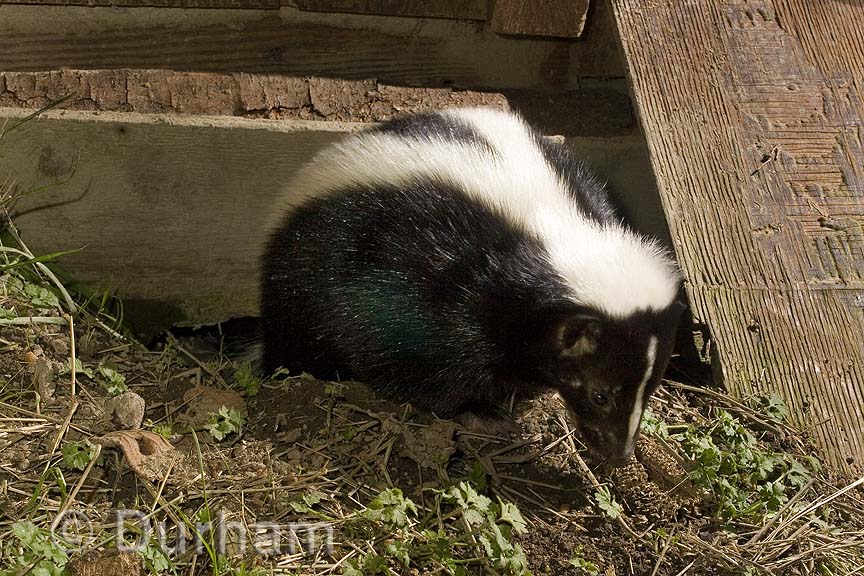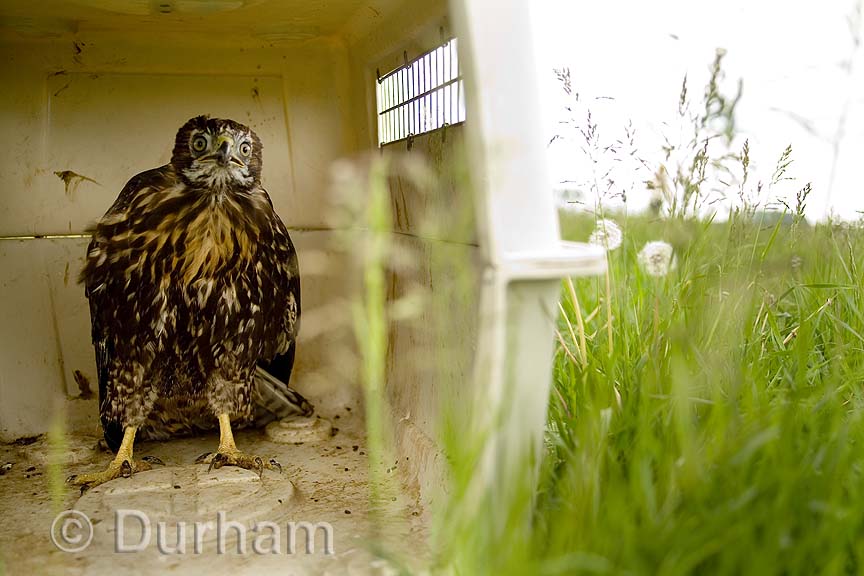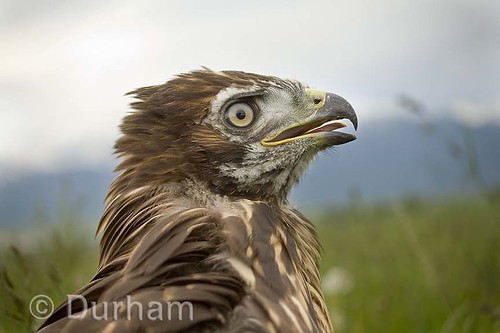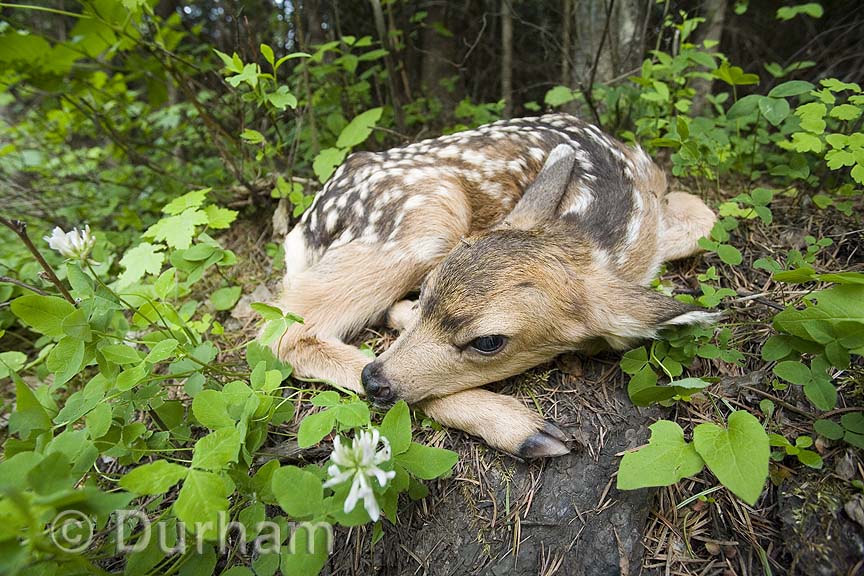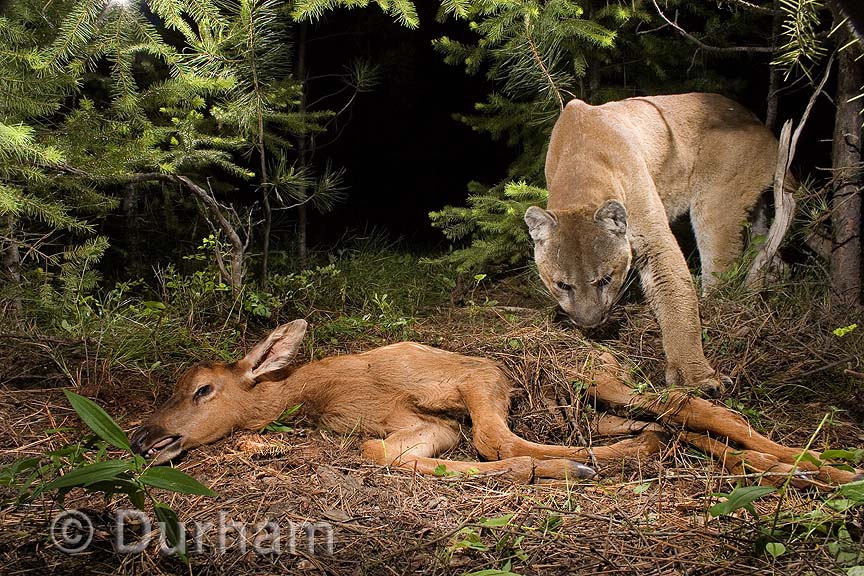
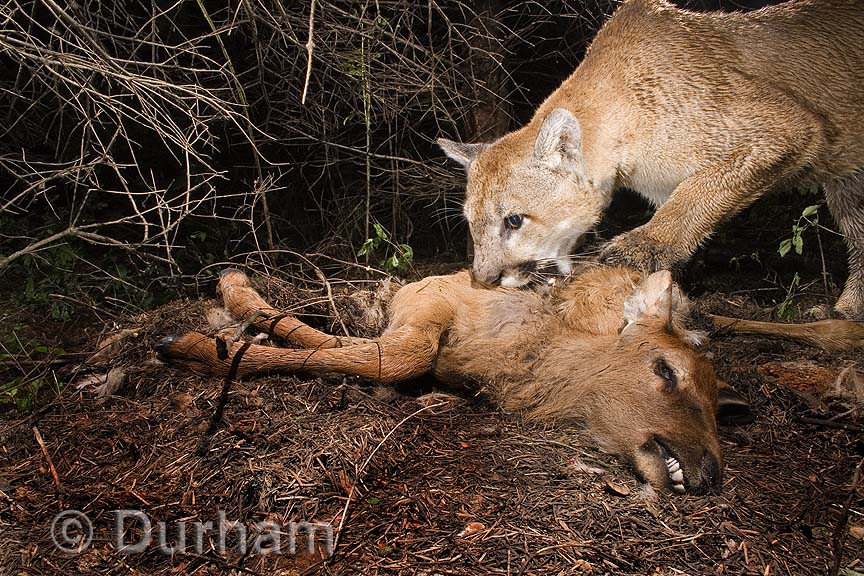
These photos might be considered gruesome by some, but I worked hard to these images of a wild cougar with its kill.
One thing I have seen over and over again are images from Africa of a cute little impala in the jaws of a cheetah, or a young zebra in the clutches of a lion. I find it fascinating that the same kind of drama happens right here in the forests of the Northwest. But it takes place out of sight deep in the woods, and mostly undercover of darkness.
When elk cows begin to birth their calves, they seek solitude and cover. Once born the calves are helpless for around 36-48 hours, and even after they gain their legs they won't be able to run very fast until a week or two later. Their instinct when their mother leaves is to curl up and hide. Cougar and bear know when calving season arrives, and they will systematically search the calving grounds for the hiding spots of the helpless calves. It is an easy meal in a landscape that is usually not very forgiving.
Wild cougars are rarely photographed (All of those cougar calendars, and books are created using trained cougars) by professional photographers. I used a remote camera system with a motion sensor, and I worked with biologists from ODFW to get these images. The are actually two different cats. The top image is the cat returning and uncovering the calf that it buried earlier. The second image was taken on a high ridge, during a cracking thunderstorm and in a driving rain. The elk calf was in a deep tree well that was mostly sheltered, and the cat is just beginning to feed. All of these were taken at night, typically around 1AM.
